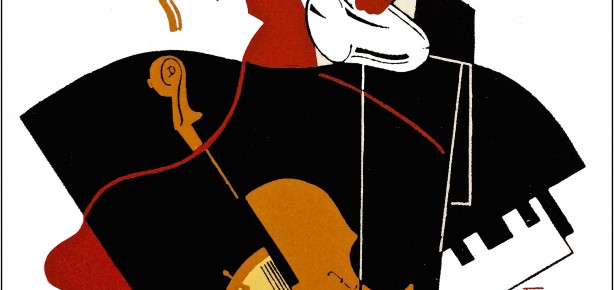
In November 1955 a foreign correspondent for the New York Times declared “America’s secret weapon” in the Cold War to be “a blue note in a minor key.” Since then, countless scholars have designated the mid 1950s as the beginning of American jazz diplomacy with the Soviet Union and Africa as primary targets. But as I’ve recently discovered, the State Department’s use of jazz as a tool for suppressing Communism began in Italy at least a decade earlier and set the stage for the well-known Jazz Ambassadors program launched by President Eisenhower in 1954.
As I explain in my new book Jazz Italian Style: From Its Origins in New Orleans to Fascist Italy and Sinatra (2017), Italy posed a particular problem for the United States at the conclusion of World War II. Whereas England, France and Germany had always looked to jazz as a “foreign” art form, “exotic” in nature, with indelible connections to African American culture, Italy embraced jazz, at least in part, as a “native” art form. This was partially because the first commercially-released jazz recording, “Dixie Jass Band One-Step” (1917), was composed and performed by an Italian American named Nick LaRocca and his Original Dixieland Jazz Band. In Italy, jazz was embraced as an art form inspired by “Italian innovation.” The Futurists praised its “virile energy,” Benito Mussolini described it as “the voice of Italian youth,” and musicians, mesmerized by its “progressive” sounds, abandoned the conservatories for the numerous dance halls that began appearing in Italy’s major cities in the 1920s. Jazz had its early detractors in Italy, just as it did in the US, but in Italy its most virulent critics were the anti-Fascist Communists. For example, in 1927 Antonio Gramsci wrote:
“If there is a danger, it lies in the Negro music and dancing that has been imported into Europe. This music has completely won over a whole section of the cultured population of Europe, to the point of real fanaticism. It is inconceivable that the incessant repetition of the Negroes’ physical gestures as they dance around their fetishes or that the constant sound of the syncopated rhythm of jazz bands should have no ideological effects.”
When the war ended, and Communism began to fill the political void left in Italy by the fall of Fascism, the US State Department looked to African American jazz specifically as a symbol of Democratic freedom.
The birth of US jazz diplomacy began in 1945, when musicians who had thrived under Mussolini’s protection began distancing themselves from their past and rewriting the history of Italian jazz. This conscious erasure of Italian jazz was facilitated by the US State Department. In an effort to redefine jazz as a symbol of American Democracy (as opposed to Italian Fascism), the US poured money into a wide range of propaganda efforts, from V-Discs and periodicals to jazz festivals and radio/TV programming. And in each of these efforts, the music promoted was largely limited to American jazz composed and/or performed by black musicians. For example, in 1945 the Italian music journal Musica e Jazz was founded with underwriting by the Anglo-American Propaganda War Bureau (PWB). The US also played a role in the development of the San Remo Jazz Festival, established in 1956 along the lines of the Newport Jazz Festival. And in the 1960s, US influence could still be felt in the various TV broadcasts of jazz, like Tempo di Jazz, that featured live performances of African American musicians. Looking back on the growth of jazz in Italy during the Cold War, one can’t help but notice how the dual problems of race and culture were influenced by the involvement of the US State Department. In Italy, jazz became the subject of heated debates about artistic agency and cultural property, and many of these debates were fueled by the musicians’ eventual realization that America’s promotion of jazz in Italy was often more concerned with containing Communism than supporting a burgeoning musical scene.
Latest Comments
Have your say!